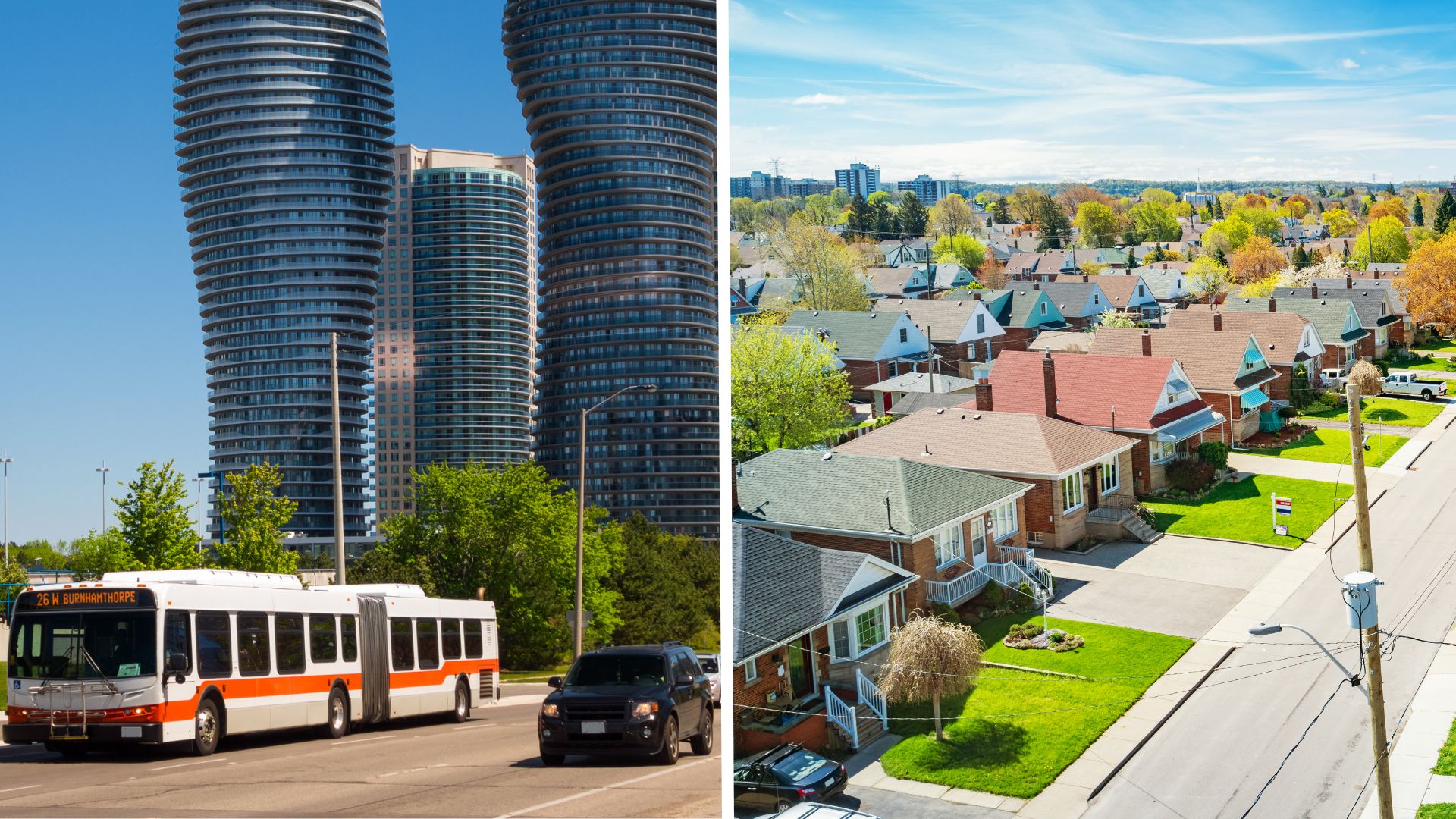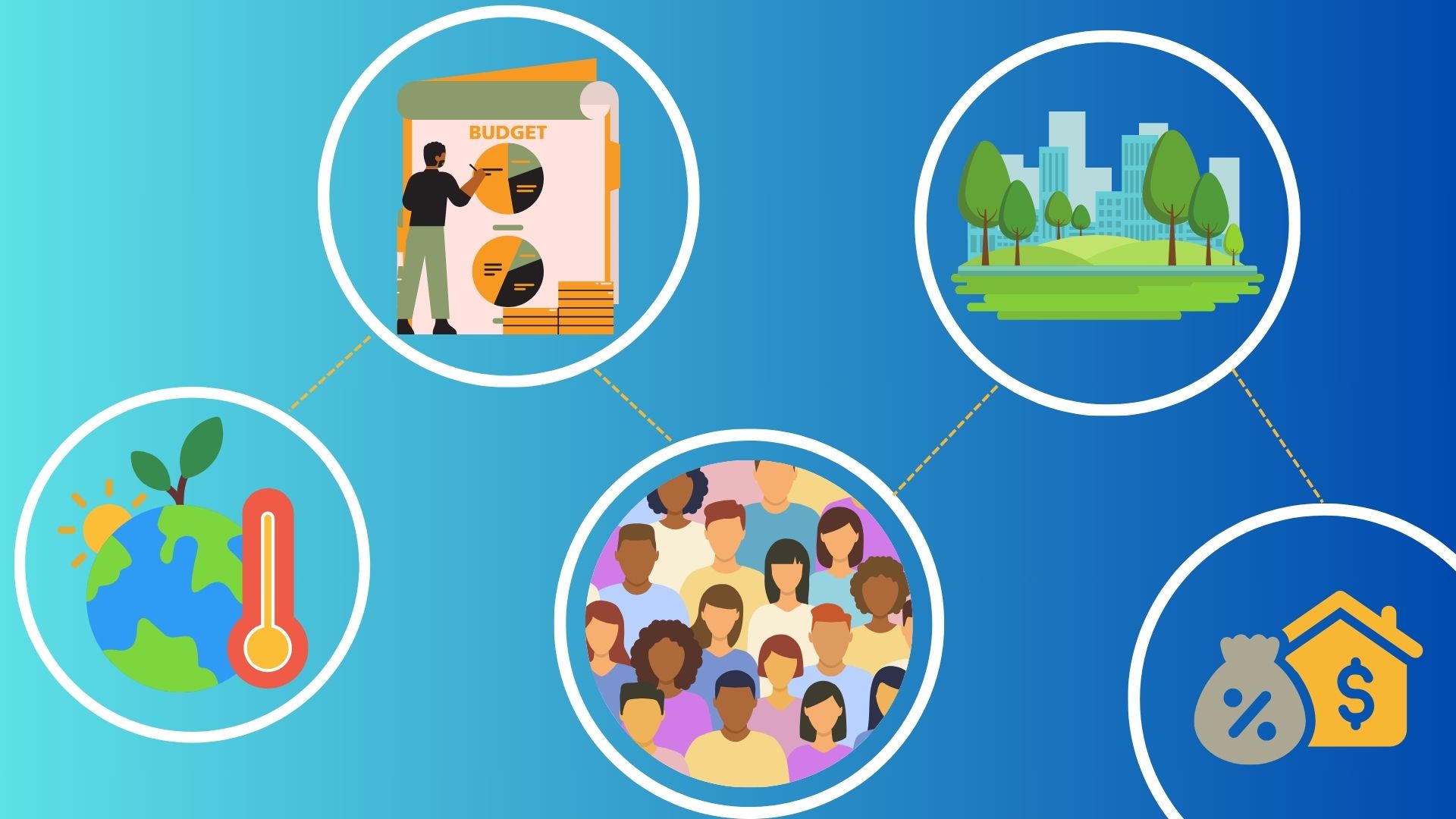Climate change and equity haven’t traditionally been considered during growth management and land use decisions. Yet, these planning decisions have significant impacts on our climate change commitments, our quest for increased equity and housing affordability, and the financial sustainability of our municipalities.
Growth management plays a pivotal role in addressing climate change, primarily through the decisions related to how communities grow. Many Ontario municipalities have adopted green development standards (GDS) to drive uptake across various metrics, such as energy efficiency and green infrastructure, with the aim of reducing the environmental impacts of new developments.
However, it’s not just about what’s built, but also where it’s built. The location of development significantly affects energy usage and emissions. A study from the University of Toronto, reveals that greenhouse gas emissions from transportation increase as developments move away from transit-oriented areas. This underscores the importance of prioritizing growth in transit-oriented development areas.

In addition, density and intensification were expected to bring greater affordability, but that hasn’t materialized. Why? There are many complex factors that affect the housing market, but one factor that municipalities have under their control is land use decisions and development fees. Development fees are meant to cover upfront infrastructure costs. Equity issues arise, however, because municipalities allocate their development fees uniformly across different development types.
Greenfield projects require entirely new infrastructure, while intensification prioritizes the use of existing infrastructure. Despite the stark cost differences across these options, municipalities often charge uniform fees. This approach inadvertently has areas requiring less infrastructure investments subsidizing greenfield developments that often require more infrastructure investments, posing equity and affordability concerns.
Development fee allocation is just one facet affecting municipal growth decisions and financial sustainability. There are additional cost considerations that need to be considered:
Cost #1: Upfront capital costs, typically funded by development fees.
Cost #2: Servicing costs for various land use types (e.g., road maintenance, water services, transit), financed through property taxes.
Cost #3: Long-term infrastructure rehabilitation expenses, also often paid for by property tax revenue.
Traditionally, municipalities focused on Cost #1, averaging these costs across all developments. More and more municipalities are now finally analyzing Costs #2 and #3 to understand their differences across land use types.
The findings are telling. Higher-density communities generate more property tax revenue while incurring lower servicing costs, supporting municipal financial sustainability. Conversely, low-density areas yield less revenue, but necessitate more spending on services and infrastructure rehabilitation, straining municipal budgets.

These interconnections between growth management, climate change, equity, affordability, and municipal financial sustainability call for more nuanced planning and policy-making. It’s not just about how we grow but also where we grow. It is also about fairness, sustainability, and resilience in the face of climate change. By embracing more holistic growth management considerations and costing analysis to explore these factors, municipalities can pave the way for a more equitable, affordable, and climate-resilient future.
To support municipal efforts in this direction Clean Air Partnership engaged Clean Air Council municipal members in an equity, climate and growth management crowdsourcing effort and top-level findings and upcoming action items are available here.
By Gaby Kalapos, Executive Director